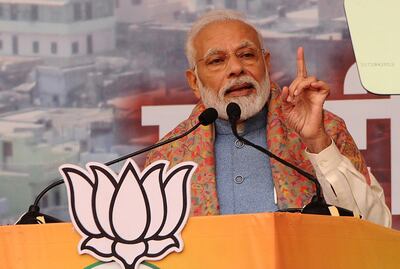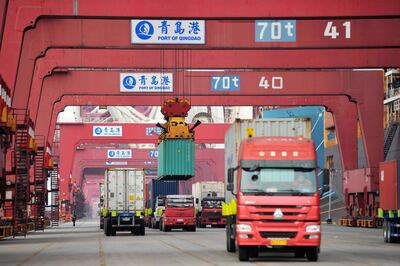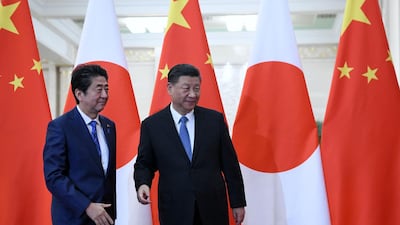There are many stories to be told about the past 10 years in Asia but one stands out above all others: this was the decade in which China decisively threw off the restraint and self-effacement preferred by the former paramount leader, Deng Xiaoping, with his famous phrase: “hide your strengths, keep a low profile”. Since Xi Jinping became general secretary of the country’s Communist Party in late 2012 and president the following year, Beijing’s determination to retake its place as one of the world’s great powers, and also to demand to be treated as one, could not have been clearer.
Mr Xi is no longer bound by term limits on the presidency, so he could continue indefinitely. Also, “Xi Jinping Thought” has been incorporated into the party’s constitution; Deng and Mao Zedong, the founding father of the republic, are the only other leaders whose political theories have found a place in the document. In essence, his time in office and his increasing dominance have put paid to another assumption of many western policymakers: that, as China became wealthier through adopting a semi-capitalist model, it would also become more liberal, open and democratic. No one now forecasts that future under Mr Xi, who says that the country will follow its own path and that the “China model” is a legitimate and appropriate alternative to western democracy.
Many other countries in Asia have also insisted that they do not have to follow what was before the rise of US president Donald Trump and the populists the standard western liberal democratic model. They have elected Hindu nationalists in India, with Narendra Modi’s BJP; a wildly popular populist with scant regard for traditional norms and proprieties in Rodrigo Duterte in the Philippines; and in Myanmar, the government has pandered to anti-Muslim prejudice with its head, Aung San Suu Kyi, having to answer charges of genocide in the United Nations’ top court.
The public role of religion has increased, rather than decreased, in countries such as Malaysia and Indonesia. And in both, the word “liberal” is considered by many to be a derogatory term. So in 2020, Japan and South Korea are the outriders, as the only two countries in the region who could truly be said to adhere to western-style liberal democracy, as the term has traditionally been understood.

However, just because Asia could be seen to be looking more to its own, different values, this does not mean countries are not concerned about the security implications of a newly assertive China. Several of the 10 members of the Association of Southeast Asian Nations dispute their maritime borders in the South China Sea with Beijing, which has built military installations on features claimed by one or more parties.
There is a general nervousness about the US’s long-term defence commitment in the Asia Pacific – “the Americans always leave”, as one analyst put it to me – exacerbated by Mr Trump’s uncertain handling of the North Korean nuclear issue and his disconcerting habit of making up policy on the hoof, such as his sudden cancelling of long-established war games with South Korea. Will Japan be required to break with its post-Second World War constitution and establish itself as a strong, independent defence power – as prime minister Shinzo Abe would like to do in any case? What are the implications if India is built up as a strategic counterweight to China?
Many countries wish to maintain good ties with both Washington and Beijing but they fear being forced to take sides. Despite China’s repeated assertions that it desires a “peaceful rise” and “win-win co-operation” with other states, there is a sense that the regional security architecture is shaking and might not be compatible with China’s ambitions.
The picture is somewhat rosier when it comes to trade. When the Beijing-backed Asian Infrastructure Investment Bank (AIIB) was launched in 2015, partly as an alternative to the US- and Japan-dominated Asian Development Bank (ADB), just about every country in the continent, apart from Japan, welcomed it and subsequently signed up as a member. The region needed trillions of dollars of investment in infrastructure; the AIIB could be part of the solution.
Perhaps because its investments have so far been in the billions rather than the trillions and fears over its governance raised by the Obama administration appear to have been quelled by the AIIB partnering with the ADB, the World Bank and individual countries, the new bank has been much less in the news.

Other trade agreements made the headlines instead: in particular the Trans-Pacific Partnership, which excluded China and which Mr Trump almost scuppered when he withdrew the US, until the remaining members revived it in a different form; and the Regional Comprehensive Economic Partnership, which would have included nearly half the world’s population, until India withdrew. If and when it is completed, though, it will still include a very significant part of the region, stretching from China, South Korea and Japan in the north, to the Asean countries, Australia and New Zealand farther south.
All of these have, however, been overshadowed by China’s Belt and Road Initiative, which is either an opportunity to transform connectivity and infrastructure to create in Asia and beyond “a big family of harmonious coexistence” – as Mr Xi has put it – or a neo-colonial plan to extend China’s influence through “debt-trap diplomacy” if you believe critics.
Many countries in Asia face similar problems: either ageing populations that a diminished workforce struggles to support, or for those with youth bulges the challenge of ensuring employment is sufficient to reap a “demographic dividend”; the struggle to escape the middle-income trap and move to upper-income status; and the economic slowdown in China and its knock-on effects in the region.
The so-far modest success of the AIIB and above all the widespread enthusiasm that greeted its creation is an example of how Asia can succeed with co-operation and goodwill. The continent must hope that Mr Xi recognises it and that China chooses to take its place as a superpower in the spirit of friendly compromise. If it seeks to lead Asia rather than dominate it, there is no reason why the future should not be golden. Optimists and cheerleaders for the continent prefer, especially at this time of year, not to dwell on the alternatives.
Sholto Byrnes is a commentator and consultant in Kuala Lumpur and a corresponding fellow of the Erasmus Forum


